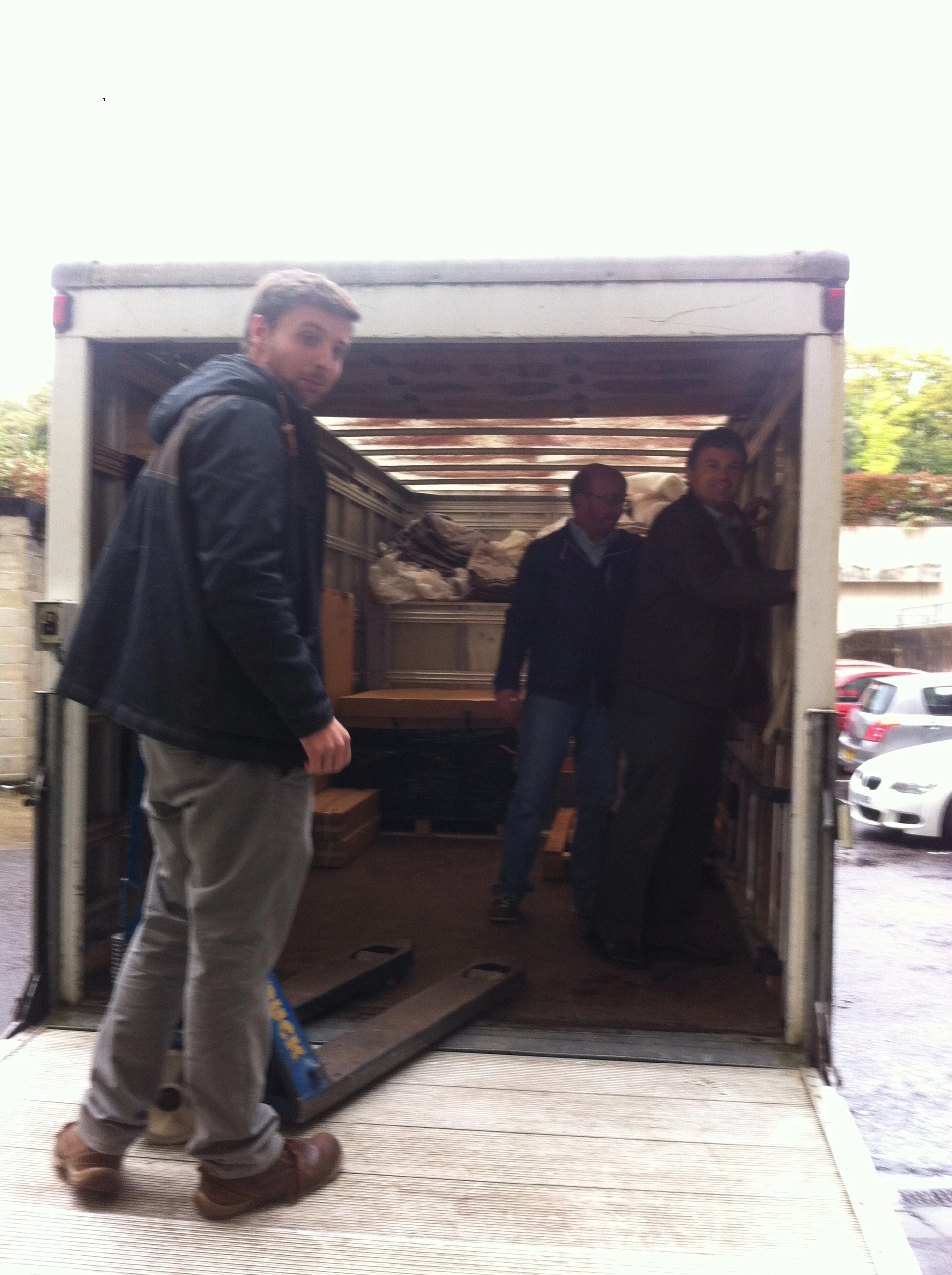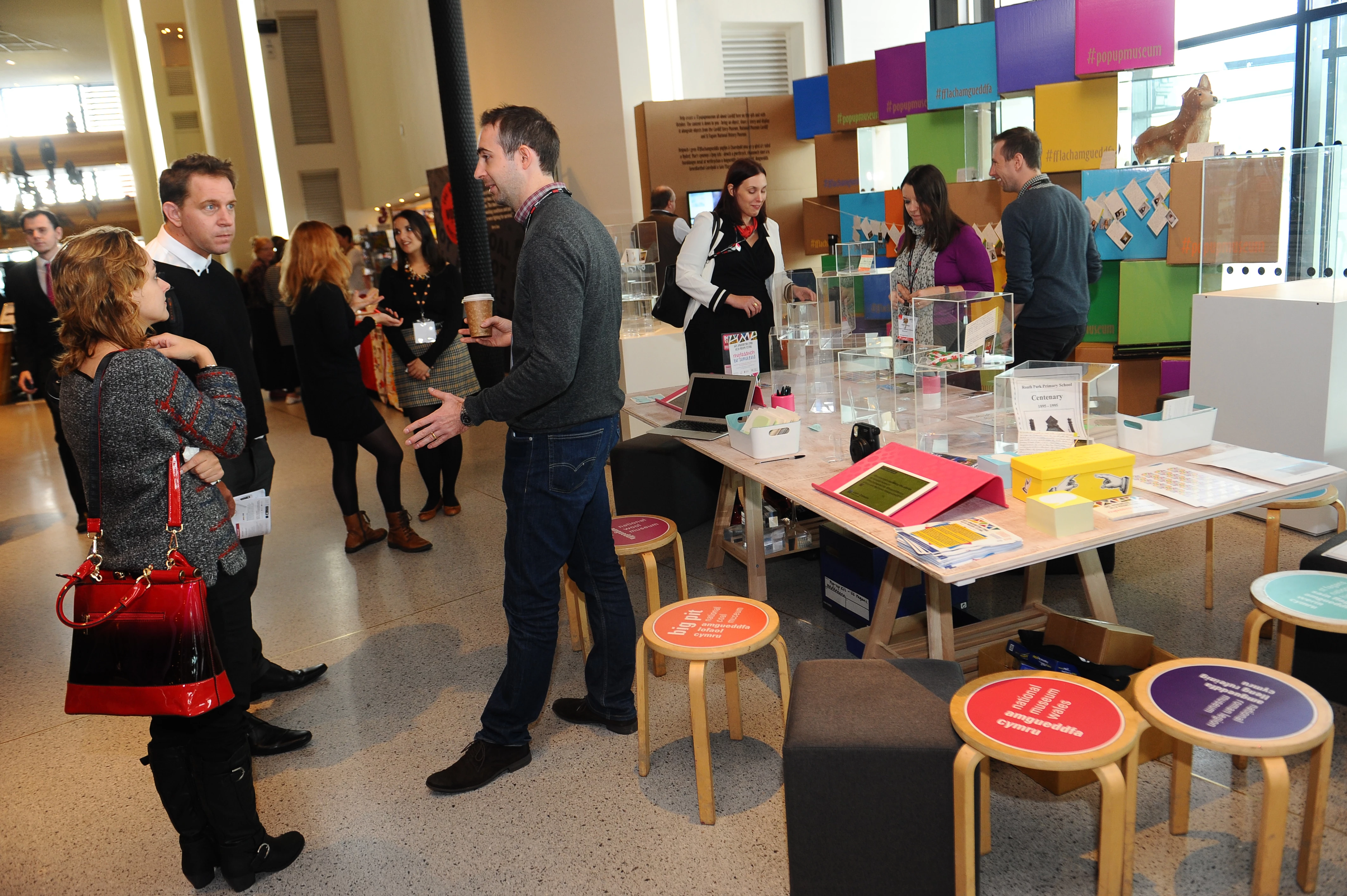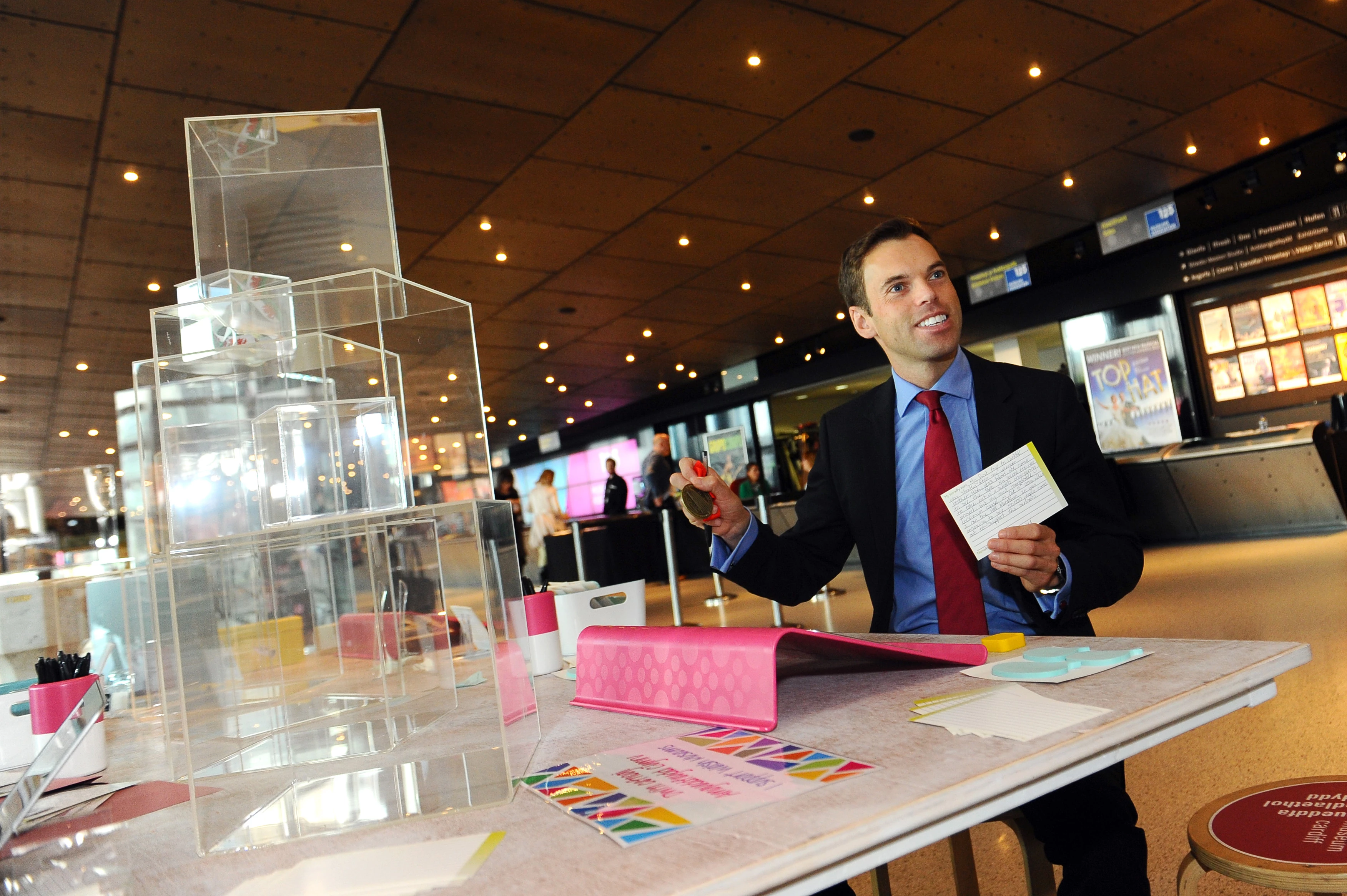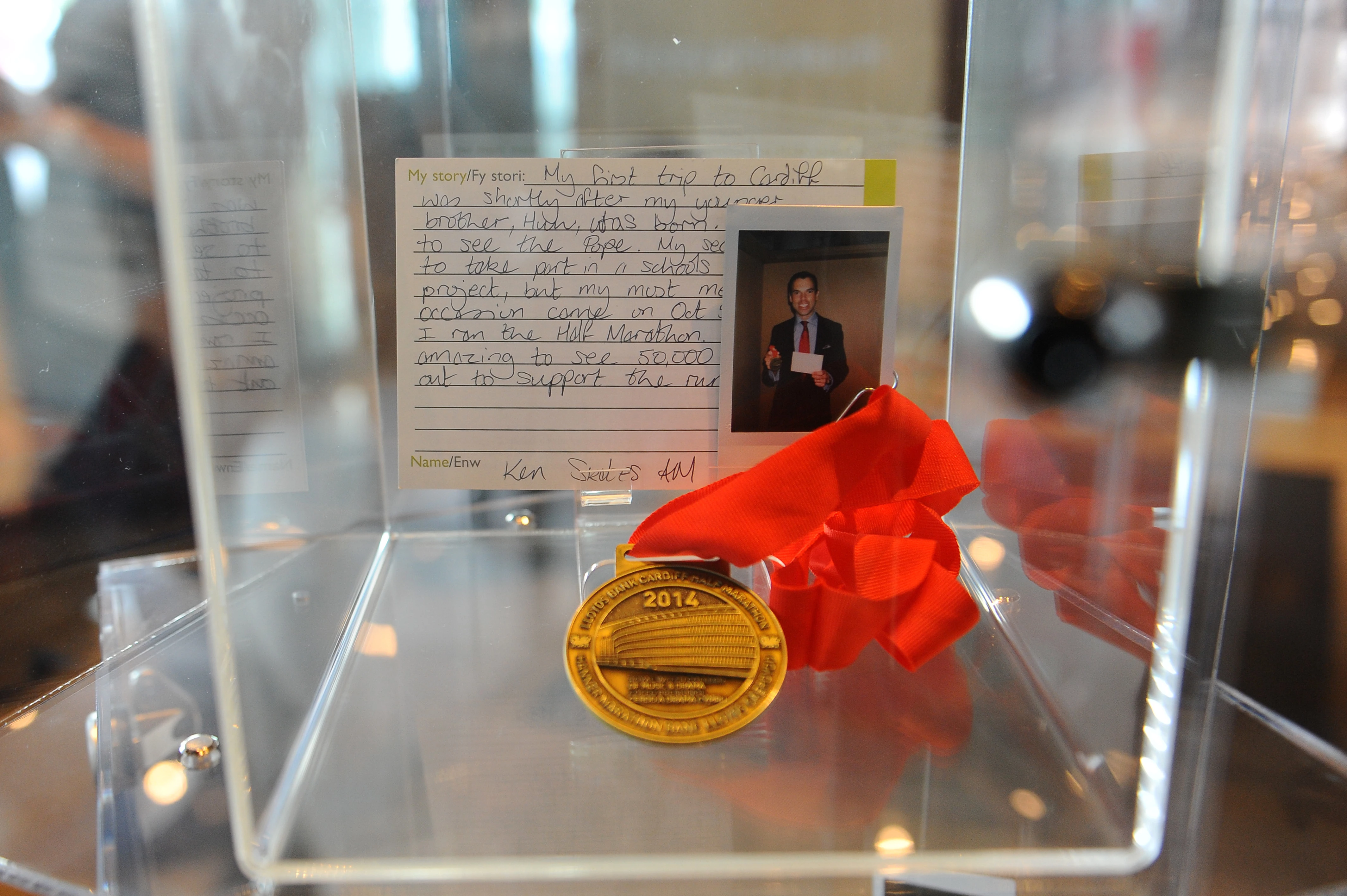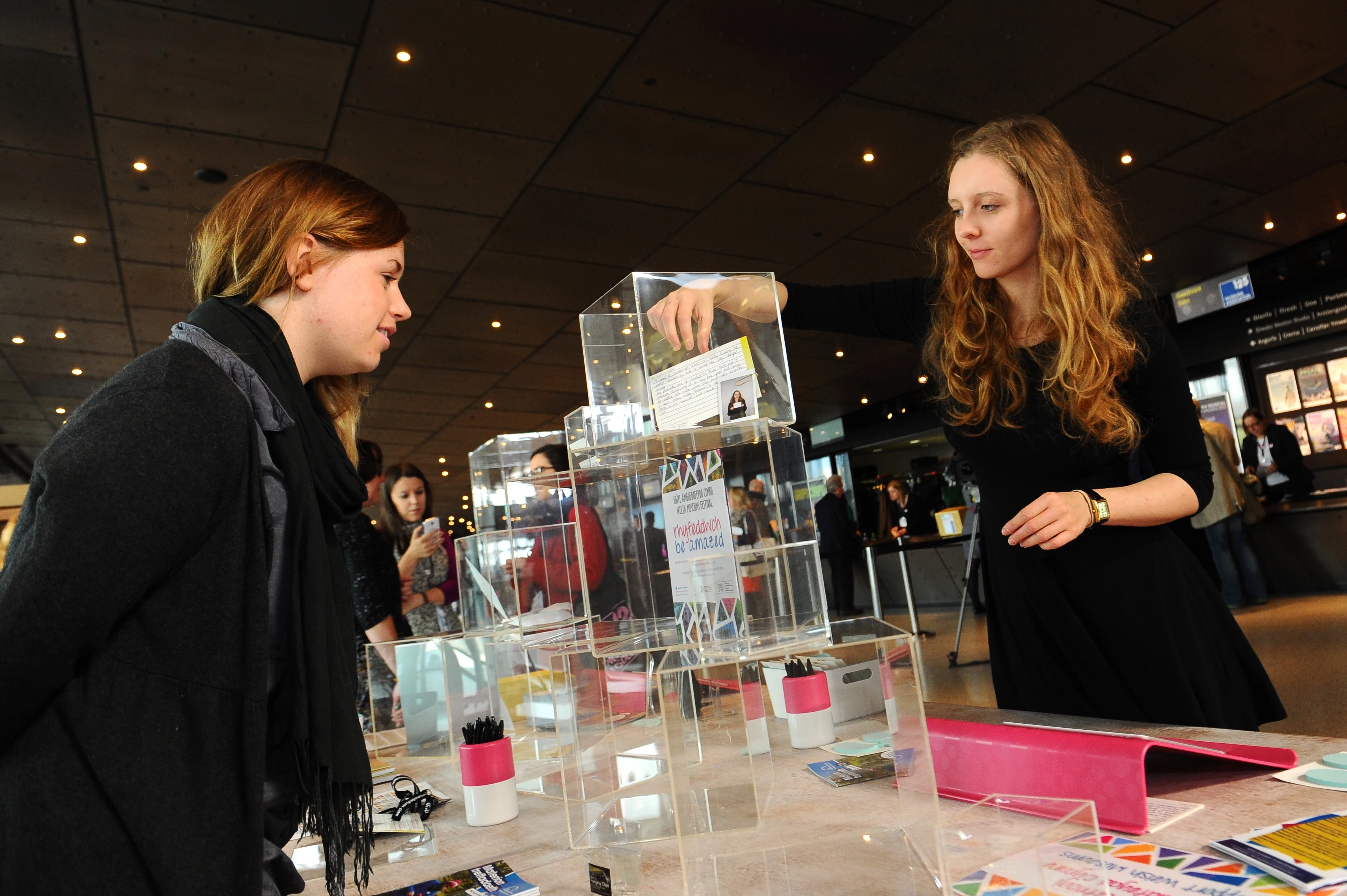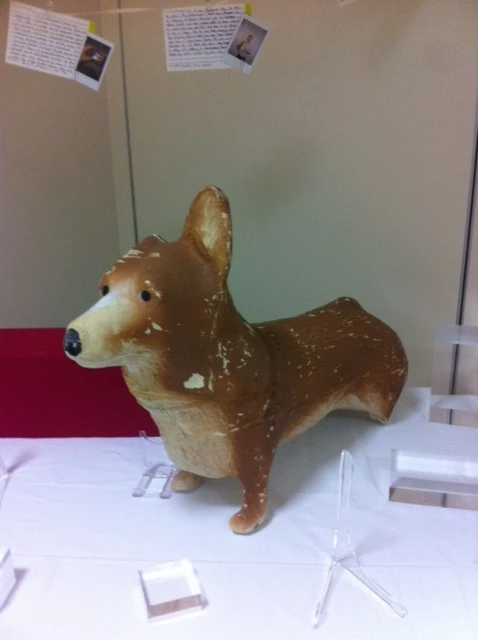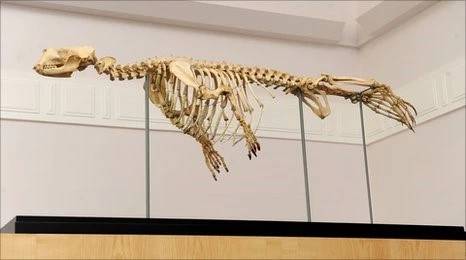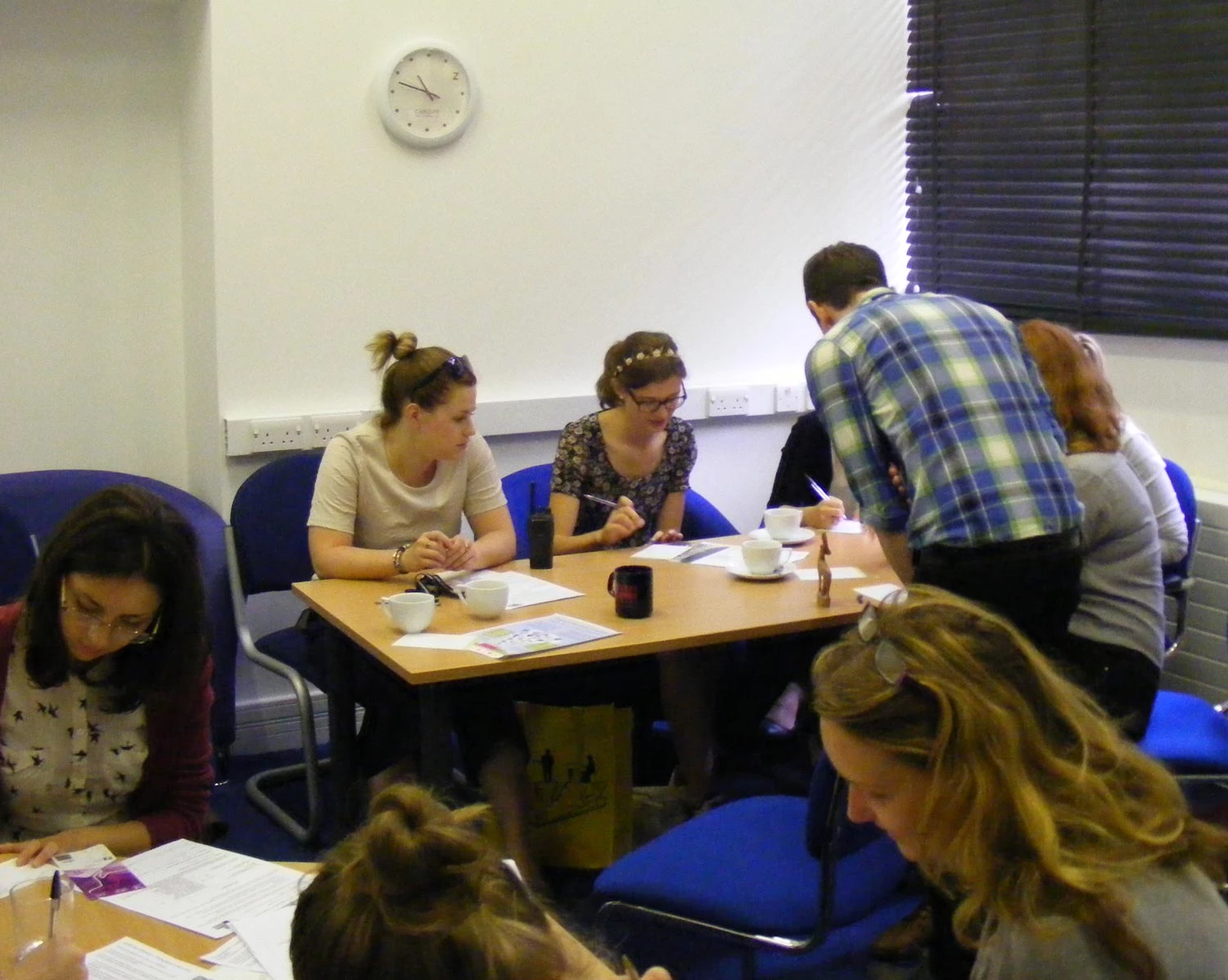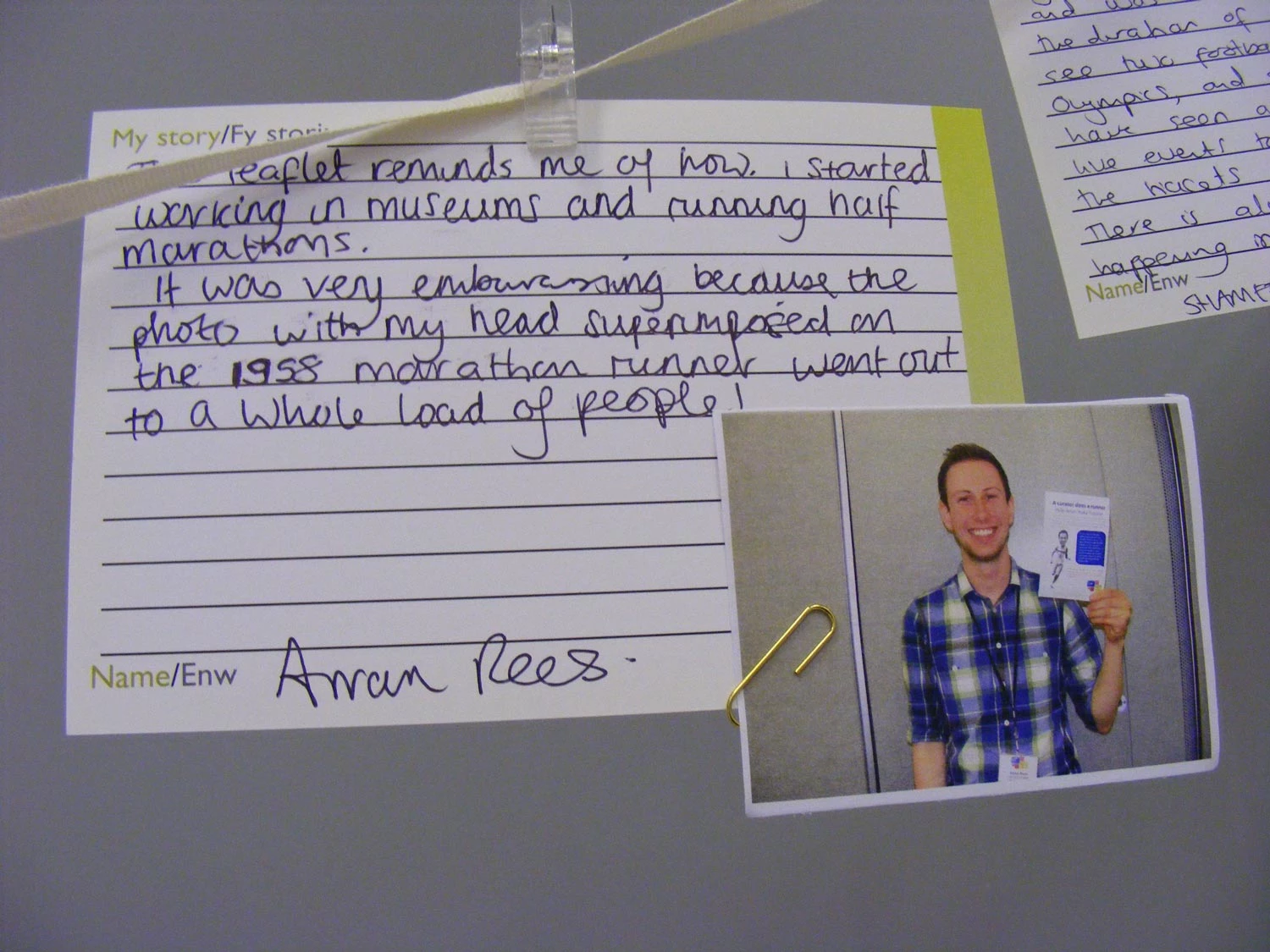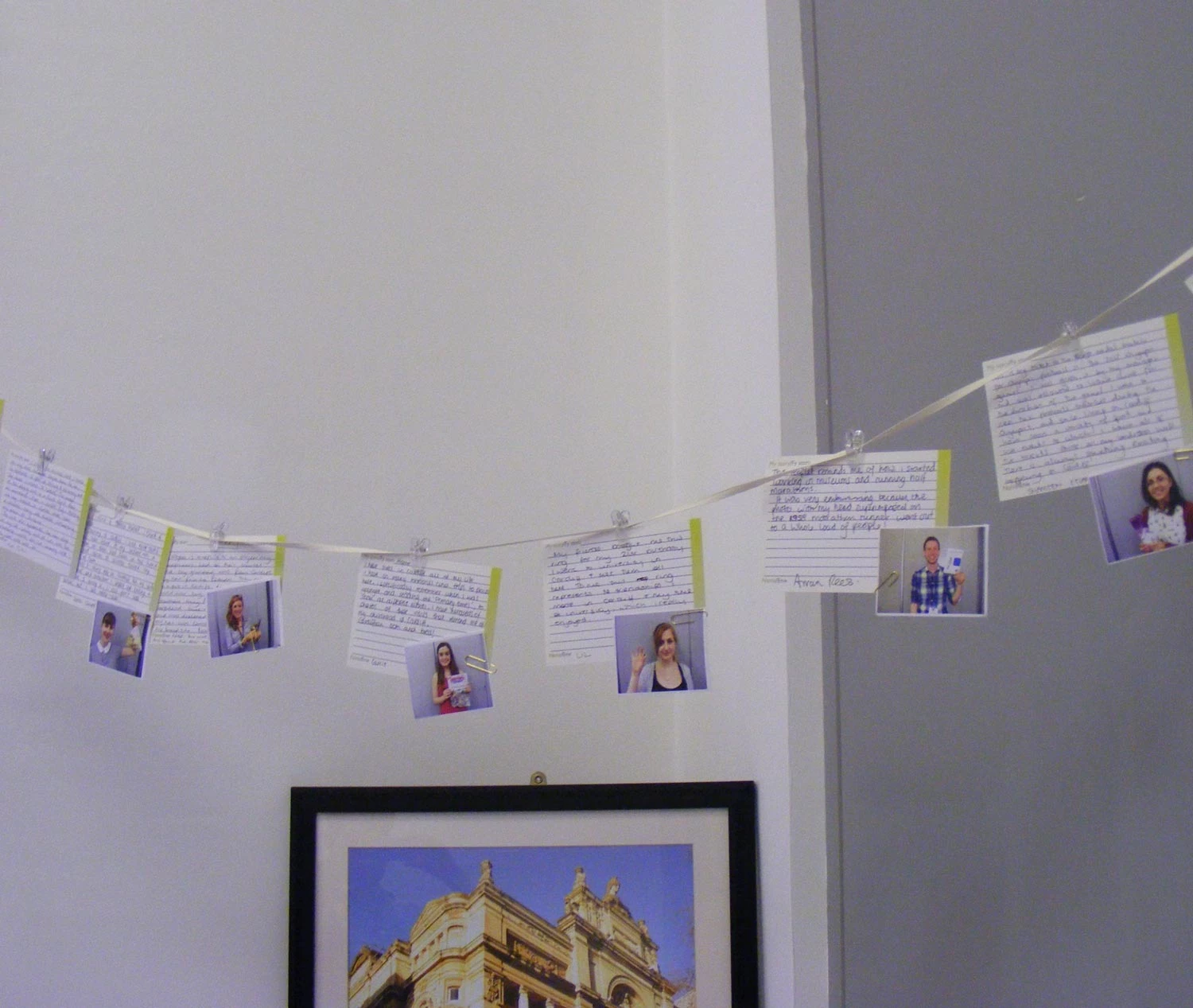#popupmuseum - How did it all go?
, 27 October 2014
The pop-up museum was created over two days at the Wales Millennium Centre as part of the Welsh Museums Festival and the Museums Association conference between 9-10 October 2014.
We set up the cases, table, boxes, screen and various cardboard structures on the Thursday before the conference.
It looked great, but we were all quite nervous. Would anyone turn up? Would people bring an object in response to our call outs on social media? Would people participate and share their Cardiff stories and memories? Would the huge table at its centre attract visitors or put them off?
Would Billy the Seal arrive safely?
We were about to find out if our experiment would work…….and thankfully it did!
What worked?
- 1. The stuff we had already collected.
We were all really glad that we already had some material for the pop-up that provided hooks to show people how they could contribute. The story cards collected at previous workshops kicked things off. They gave people an idea of how they could contribute, and made the Cardiff theme obvious. The voxpops also provided people with another focus and showed that people had already shared their Cardiff story. This encouraged participants to be filmed sharing their story at the pop-up.
- 2. Taking photographs of participants
We took a photograph of all participants with an instant camera and pinned them to their story cards. This emphasised the personal aspect and made stories easier to find
- 3. The big table in the middle with plenty of chairs.
This space really worked. It became a social space where people came together and shared their Cardiff story and a space where strangers started talking to each other. We piled Perspex boxes on top of each other along the middle and gradually filled them with objects over the two days. We encouraged people to write their comments about other people’s stories on post-its and stick them on the boxes. This added another layer to the interpretation.
- 4. Using iPads to show social media content
We had built up interest around the pop-up on social media in the lead up to the pop-up itself, so it was good to continue this momentum. We used two iPads on the table as live labels that showed all tweets with the #popupmuseum #fflachamgueddfa hashtag. We used this as a way of highlighting interesting stories and providing information about what was happening at the pop-up over the 2 days. We also experimented with iBeacons and placed content about some of the objects on that so that people could access it using their hand held devices.
- 5. We invited the Media and the Deputy Minister for Culture, Sport and Tourism!
To keep the buzz around the pop-up museum going, we managed to generate press interest in the pop-up. The experience was filmed by s4C for Heno and by Cardiff TV. Deputy Minister Ken Skates also came to the pop-up and contributed his Cardiff story. He was really interested in the fact that we had created a museum in 48 hours that anyone could contributed to.
- 6. Billy the Seal made it!
Thanks to the huge effort of conservation staff across Amgueddfa Cymru, Billy made it to the pop-up. Billy generated lots of interest and was definitely a big pull to the pop-up. It was useful to have one star object that attracted the curious. Those who knew about Billy’s story couldn’t believe that she was actually there and that it was part of the museum’s collections. And those who didn’t know the story were…confused but intrigued.
- 7. Working with Cardiff Story, HLF, and Youth Forum members
You can’t set up a pop-up museum without a team. The input from our Youth Forum members was invaluable, making sure that the processes of the pop-up ran smoothly and making sure that participants knew what to do. Staff members form the Heritage Lottery Fund provided guidance and support throughout the pop-up process. Working with Arran Rees and Lucy Connors from the Cardiff Story and was a great experience and we are already planning to create a pop-up together again in the future.
